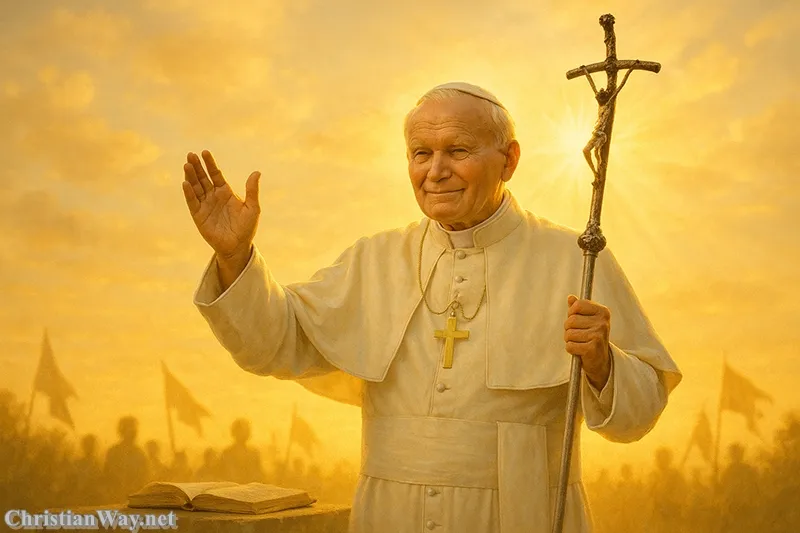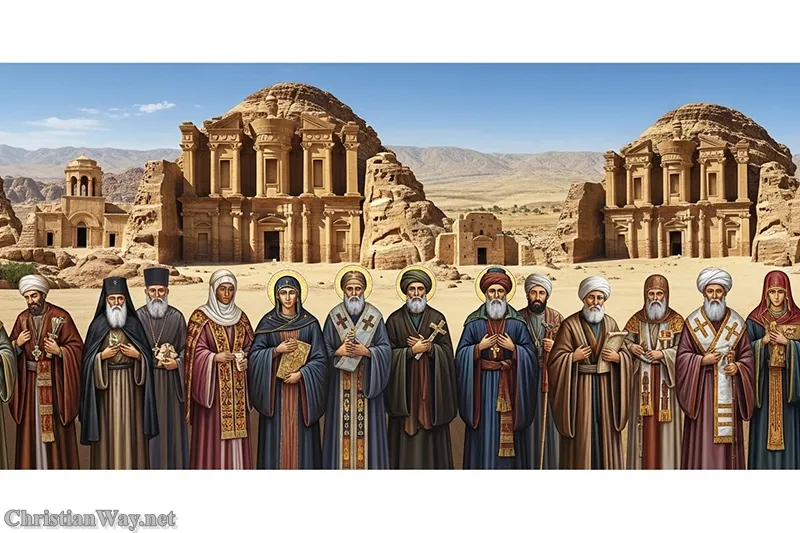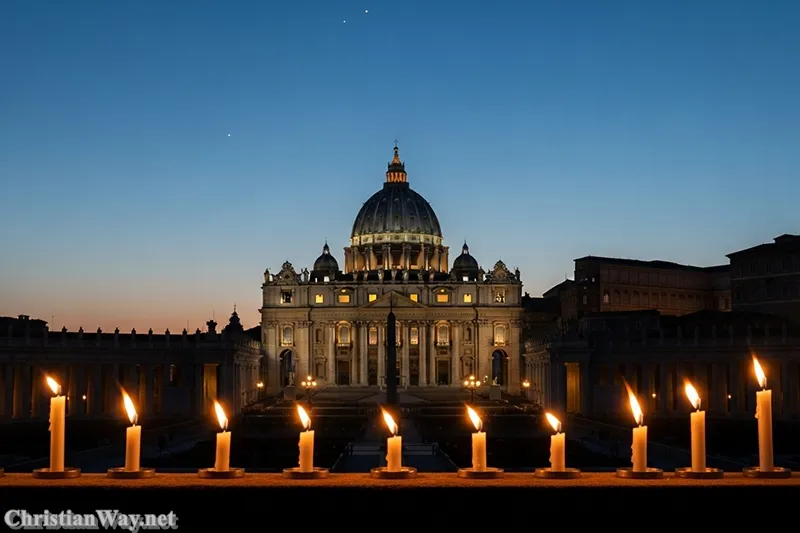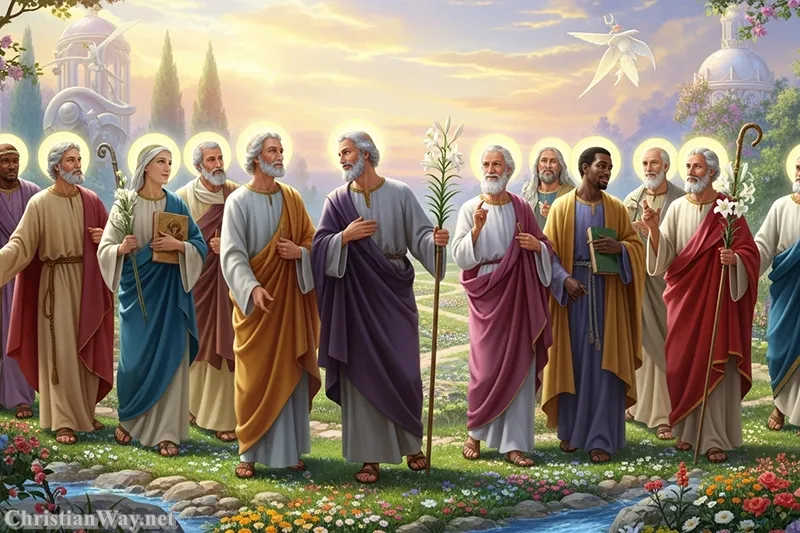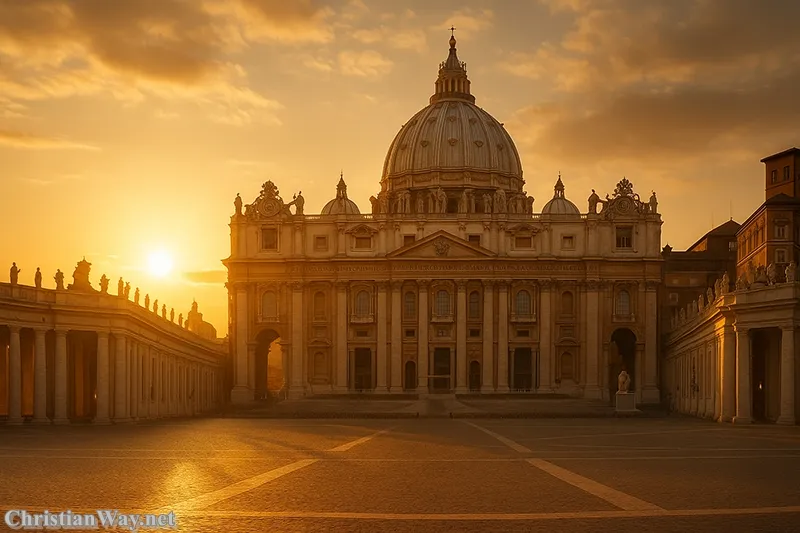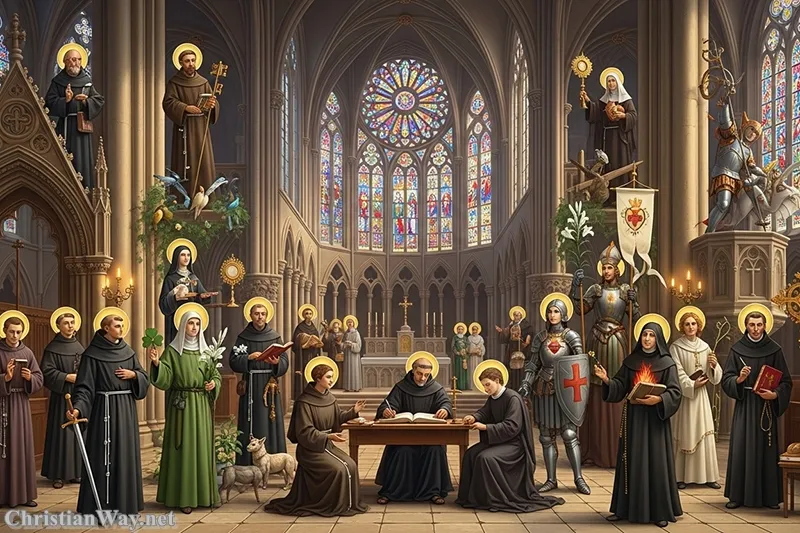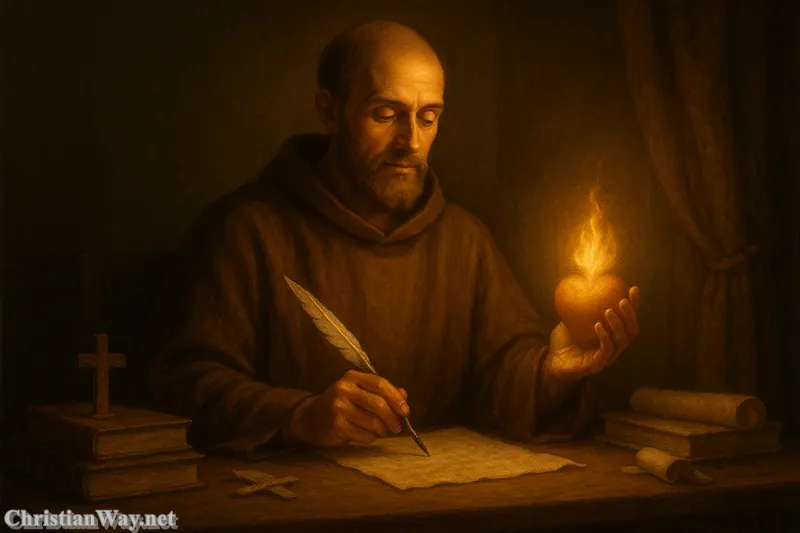Dear friends in Christ,
Every age of the Church receives from God a saint who reminds us that holiness is not an ideal of the past but a living possibility. In the tumult of the twentieth century — an era marked by war, doubt, and pain — God gave us Saint Padre Pio, a simple friar from southern Italy whose life radiated both suffering and joy.
Born into poverty, hidden in prayer, and adorned with the wounds of Christ, St Pio of Pietrelcina became one of the most beloved saints of modern times. He heard confessions for hours, performed miracles through prayer, and bore the stigmata, the sacred marks of the Passion.
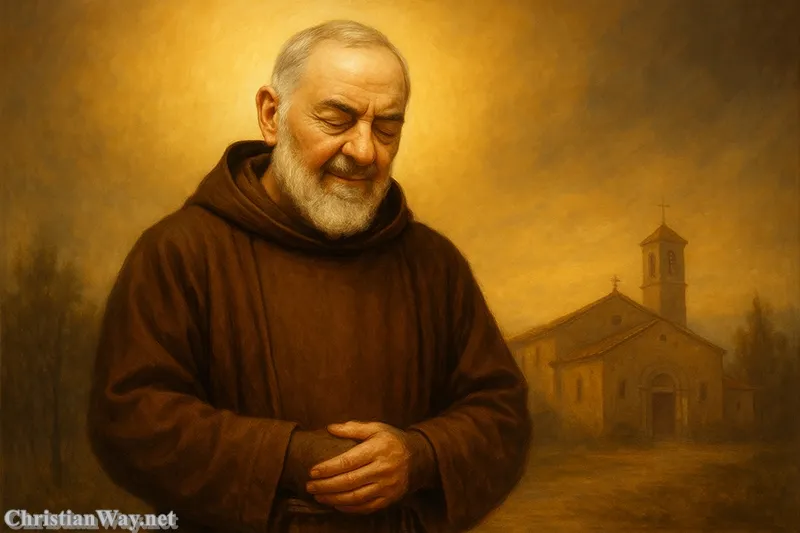
Yet beyond all the marvels, what made Padre Pio truly holy was not the extraordinary, but the ordinary lived with love — his humility, obedience, and compassion for souls.
He once said,
“Pray, hope, and don’t worry. Worry is useless. God is merciful and will hear your prayer.”
Let us journey together through his life and legacy — not merely to admire his gifts, but to encounter the God who worked through him.
The Early Life of Saint Padre Pio — A Child of Faith
From Pietrelcina to the Capuchin monastery
St Padre Pio biography begins in the small village of Pietrelcina, Italy, on May 25, 1887, when he was born Francesco Forgione. His family was poor but rich in faith. From childhood, he was drawn to prayer and penance, often spending hours in silence before the crucifix.
At age fifteen, he entered the Capuchin Franciscan Order, a branch of the Franciscans known for its simplicity and devotion. There he received the name Pio, in honor of Pope Pius I.
Even as a novice, young Padre Pio experienced profound spiritual trials — visions of Christ and the Blessed Virgin, battles with temptation, and mysterious physical sufferings. He offered all these for the salvation of souls.
Ordained a priest in 1910, his motto became the same as Saint Paul’s: “I have been crucified with Christ; it is no longer I who live, but Christ who lives in me.”
From that moment, his priesthood would become a living reflection of the Cross.
The Stigmata of Padre Pio — A Living Wound of Love
A sign of Christ’s Passion in modern times
On September 20, 1918, while praying before a crucifix in the choir loft of the Capuchin church in San Giovanni Rotondo, Padre Pio received the stigmata — the visible wounds of Christ in his hands, feet, and side.
The pain was intense, but he bore it silently, hiding it under gloves or bandages out of humility. Doctors and Church officials examined the wounds many times; they bled continually for fifty years, yet never became infected.
To Padre Pio, the stigmata was not a privilege but a participation in the suffering of Christ. He said:
“The wounds are my cross, the source of my joy, not of my pain.”
Through this mysterious union with Christ Crucified, he became a sign for a generation that had forgotten God’s love — proof that the Passion is not an ancient story, but a living mystery.
The Capuchin Friar of San Giovanni Rotondo
A hidden life of prayer, penance, and love
After the stigmata, Saint Padre Pio remained in the remote Capuchin monastery at San Giovanni Rotondo, where he would live for the rest of his life.
There he spent his days in prayer, Mass, confession, and counsel. His life was intensely structured and deeply spiritual: rising before dawn, celebrating Mass with tears, and praying the Rosary constantly — sometimes up to thirty times a day.
He saw his vocation as being a bridge between God’s mercy and human misery. To those who came to him, he offered both spiritual direction and practical compassion.
“I will stand at the gates of Paradise until all my spiritual children have entered,” he once promised.
For more than fifty years, the faithful flocked to him — soldiers, mothers, skeptics, and sinners — all drawn by his holiness.
Padre Pio the Confessor — The Saint of Reconciliation
A priest of mercy and healing
One of the most powerful ministries of Saint Padre Pio was the confessional. He spent up to sixteen hours a day hearing confessions, reading hearts with supernatural insight. Many said he could tell their sins before they spoke.
Penitents left renewed, weeping for joy, reconciled to God. He reminded them that confession was not a courtroom but a healing encounter with divine mercy.
He would tell them gently:
“The mercy of God is greater than your sins. Trust in His forgiveness.”
For Padre Pio, every confession was a victory of grace — every soul a miracle of love. His tireless work as the saint of confession made him one of the greatest spiritual healers of the modern Church.
Miracles of Saint Padre Pio — Signs of God’s Presence
Heaven’s power made visible
The life of St Pio of Pietrelcina was marked by extraordinary miracles — not to glorify himself, but to reveal the mercy of God. Witnesses reported countless wonders:
- Healings: The blind saw, the sick were cured, the paralyzed walked.
- Bilocation: He was seen in two places at once — comforting soldiers, visiting homes, or guiding the dying.
- Prophecy: He foretold future events and the souls’ destiny with astonishing accuracy.
- Fragrance of sanctity: A heavenly perfume of flowers often filled the air around him, even after his death.
- Intercessions: Thousands continue to receive miraculous favors through his prayers today.
Yet Padre Pio always insisted:
“It is God who works the miracle, not I.”
These signs confirmed his holiness, but it was his compassion that converted hearts.
The Suffering and Obedience of Saint Padre Pio
Purified by the cross
Padre Pio’s life was not one of ease or fame; it was filled with suffering — physical, spiritual, and emotional. He endured suspicion, misunderstandings, and even restrictions from Church authorities who, for a time, forbade him from celebrating public Mass or hearing confessions.
Through it all, he remained obedient and silent. He said,
“I will obey, even if obedience kills me.”
This humility deepened his sanctity. He saw suffering as a way to unite with Christ and save souls. His body bore the marks of pain, but his eyes radiated peace.
He offered his wounds and illnesses for the salvation of sinners and for the souls in purgatory, saying:
“The more I am crucified, the more I rejoice.”
Saint Padre Pio’s Love for the Eucharist and the Blessed Virgin Mary
Heart of his holiness
The center of Padre Pio’s spiritual life was the Holy Eucharist. His Masses were long, reverent, and filled with tears — a visible participation in the sacrifice of Christ. Many who attended said it felt as though they were at Calvary itself.
He said:
“The world could exist more easily without the sun than without the Mass.”
His devotion to the Blessed Virgin Mary was also profound. He prayed the Rosary constantly, calling it his “weapon.” He urged all the faithful to cling to Our Lady, saying:
“Love the Madonna and make her loved. Always recite the Rosary.”
Through Mary and the Eucharist, he found strength to carry his cross and bring light to others.
The Foundation of “Casa Sollievo della Sofferenza” — The House for the Relief of Suffering
Charity made visible
Though he lived a cloistered life, Padre Pio’s heart embraced the suffering world. In 1956, with the help of benefactors, he founded the Casa Sollievo della Sofferenza (“House for the Relief of Suffering”) — a hospital in San Giovanni Rotondo dedicated to the care of the sick in body and soul.
He called it a “temple of prayer and science,” where doctors and nurses would serve not only with skill but with compassion. Today it remains one of Italy’s most renowned hospitals, continuing his mission of mercy.
This work of love became a living expression of the Gospel — proof that faith, when genuine, heals not only hearts but also humanity.
The Final Years and Death of Saint Padre Pio
Returning to God through the cross
By the 1960s, Padre Pio’s health had greatly declined. His wounds continued to bleed, and his strength waned. Yet he never ceased praying or hearing confessions.
On September 23, 1968, after celebrating his final Mass and whispering the names of Jesus and Mary, he peacefully entered eternal life at the age of 81.
Remarkably, at the moment of his death, the stigmata disappeared completely, leaving smooth, healed skin. It was as if God had withdrawn the visible signs now that the soul had entered glory.
Hundreds of thousands attended his funeral, and miracles immediately followed his death.
Canonization and Legacy of Saint Padre Pio
The saint of our times
Padre Pio was beatified by Pope John Paul II in 1999 and canonized in 2002 as Saint Pio of Pietrelcina. His feast day, September 23, is celebrated with great joy across the world.
He is venerated as a patron saint of healing, suffering, and mercy, and his name has become a source of comfort for millions.
In him, modern humanity finds a witness that miracles are real, confession still heals, and holiness is possible in every age.
His simple words — “Pray, hope, and don’t worry” — have become a global prayer for peace.
The Spirituality of Saint Padre Pio
Lessons from a life of faith
The spirituality of Saint Padre Pio can be summed up in three great loves:
- Love for the Cross – He accepted suffering not as punishment, but as participation in Christ’s redemptive work.
“The cross will not crush you; if its weight makes you stagger, its power will also sustain you.”
- Love for the Eucharist – His whole priesthood was centered on the Mass, where heaven touched earth.
- Love for Souls – He saw every confession as a battle for salvation, every prayer as an act of mercy.
He also embodied profound obedience, humility, and compassion — virtues that shine brighter than any miracle.
Padre Pio in the Modern World
A saint for our generation
In an age marked by skepticism and spiritual hunger, Saint Padre Pio stands as a beacon of faith. His life bridges the supernatural and the ordinary — reminding us that God still moves among us.
For those who suffer in silence, he teaches that pain can be transformed into prayer.
For those burdened by guilt, he reminds that confession is the door to freedom.
For those who doubt God’s closeness, he whispers: “God is closer to you than you think.”
He is not merely a saint of the past, but a companion for today — interceding for those who seek healing, peace, and mercy.
Lessons from Saint Padre Pio’s Life
1. Pray with trust
His motto, “Pray, hope, and don’t worry,” captures the essence of Christian peace.
2. Embrace suffering with faith
Suffering, united to Christ, becomes redemptive love.
3. Seek confession often
He said, “Confession is the soul’s bath.” Frequent reconciliation renews grace.
4. Love the Eucharist deeply
The Mass was his heartbeat; he invites us to live the same devotion.
5. Stay humble in all things
Despite miracles, Padre Pio called himself “a poor friar who prays.”
🕯️ Reflect and Pray
O Saint Padre Pio,
faithful servant of God,
you bore the wounds of Christ with love
and offered your suffering for the salvation of souls.
Teach us to trust in the mercy of God,
to bear our crosses patiently,
and to bring comfort to those in need.
Help us to pray with faith,
to hope without fear,
and to love without measure.
Saint Pio of Pietrelcina,
intercede for us before the throne of God,
that we too may become instruments of His peace and mercy.
Amen.
May the wounded love of Saint Padre Pio
bring peace to your heart
and strengthen your trust in the mercy of Christ.
— Fr. John Matthew, for Christian Way
